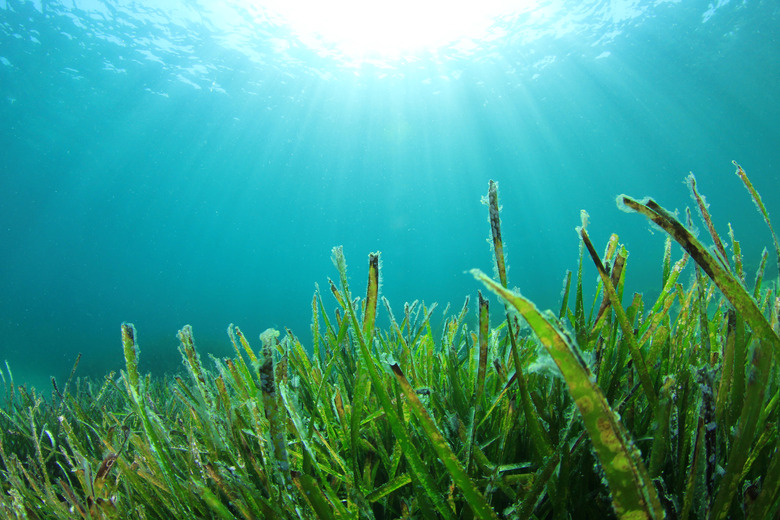What Is The Role Of Producers In An Ecosystem?
Every ecosystem is made up of three broad components: producers, consumers and decomposers.
Producers are organisms that create food from inorganic matter. The best examples of producers are plants, lichens and algae, which convert water, sunlight and carbon dioxide into carbohydrates. Consumers are organisms that cannot create their food. Instead, they consume the food generated by producers or consume other organisms that have in turn consumed producers. Many insects and animals are consumers. Decomposers break down dead or dying organic matter. Examples of decomposers include detritus feeders such as earthworms and sowbugs, as well as some fungi and bacteria. Scavenger animals can also be thought of as decomposers.
The producers are the foundation of any ecosystem. They create the matter, or biomass, that sustains the rest of the ecosystem.
TL;DR (Too Long; Didn't Read)
All ecosystems are dependent upon the activities of producers. These organisms – plants on land and algae on water – turn sunlight and inorganic matter into food.
What Makes a Producer?
What Makes a Producer?
Producers are by definition autotrophs, which means they are self-feeding. This group of organisms uses solar energy (photosynthesis) – or more rarely inorganic chemical reactions (chemosynthesis) – to create food in the form of energy-rich molecules such as carbohydrates. This process, the synthesis of carbon dioxide into organic compounds, is called primary production and is indirectly or directly connected to the survival of all life on Earth.
The Role of Plants and Lichens in Terrestrial Ecosystems
The Role of Plants and Lichens in Terrestrial Ecosystems
Plants and lichens are the primary producers on land. Trees, shrubs, vines, grasses, mosses and liverworts are the primary producers in temperate and tropical climates. In the Arctic, where plants are not as well equipped to survive, lichens – symbiotic organisms made up of photosynthesizing algae or cyanobacteria and fungus – are the primary producers.
In the temperate and tropical zone, a food web may begin with grass, for example. The grass grows by converting energy from the sun and carbon dioxide into its tissues and stored carbohydrates. A caterpillar nibbles on the grass but ends up being eaten by a bird. A predatory cat then eats the bird. When the big cat dies, its body decomposes with the help of decomposers and provides inorganic molecules that in turn feed the plant producers in the ecosystem.
In the Arctic, this theoretical life web is usually shorter. Lichen grows on a rock, reindeer eat the lichen, and then when the reindeer die their bodies nourish scavengers and decomposers.
The Role of Algae in Aquatic Ecosystems
The Role of Algae in Aquatic Ecosystems
Algae is a broad grouping of aquatic plants or plantlike organisms that contain chlorophyll. They are the basis of all aquatic life webs. Though algae often resemble terrestrial plants, they lack structures such as stems, leaves and roots. Furthermore, algae can range from tiny unicellular organisms like diatoms (microalgae) to large multicellular organisms like kelp (macroalgae).
In a marine food web, algae are the foundation. Phytoplankton, a variety of single-celled algae, are consumed by zooplankton, which are then consumed by crustaceans, fish and whales. The crustaceans, fish and whales are in turn consumed by other organisms including humans.
In any ecosystem, producers are at the base of the entire food web. All other organisms are dependent upon the food-creating activities of primary producers.
Cite This Article
MLA
Grosfield, Lynsey. "What Is The Role Of Producers In An Ecosystem?" sciencing.com, https://www.sciencing.com/role-producers-ecosystem-6669951/. 17 April 2018.
APA
Grosfield, Lynsey. (2018, April 17). What Is The Role Of Producers In An Ecosystem?. sciencing.com. Retrieved from https://www.sciencing.com/role-producers-ecosystem-6669951/
Chicago
Grosfield, Lynsey. What Is The Role Of Producers In An Ecosystem? last modified August 30, 2022. https://www.sciencing.com/role-producers-ecosystem-6669951/
